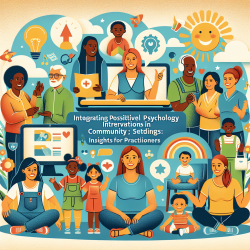Building Trust in AI: A Fun and Easy Guide for Practitioners
In the rapidly evolving world of artificial intelligence (AI), ensuring trust in AI systems is paramount. The recent research article, "Artificial Intelligence (AI) Trust Framework and Maturity Model: Applying an Entropy Lens to Improve Security, Privacy, and Ethical AI," offers valuable insights into enhancing trust in AI systems. This blog will explore how practitioners can implement these findings to improve their skills and encourage further research.
Understanding the AI Trust Framework and Maturity Model
The AI Trust Framework and Maturity Model (AI-TMM) is designed to enhance trust in AI systems by applying an "entropy lens." Entropy, in this context, helps quantify the uncertainty or randomness in AI algorithms, which can affect human trust. The framework aims to establish a balance between performance, governance, and ethics in AI systems.
Key Components of the AI Trust Framework
- Explainability (XAI): Ensures AI systems provide understandable explanations for their decisions, fostering transparency and accountability.
- Data Privacy: Protects individuals' rights and personal information, ensuring ethical data handling and compliance with regulations.
- Technical Robustness and Safety: Evaluates the system's resilience against adversarial attacks and ensures reliable performance.
- Transparency: Promotes accountability by providing clear documentation and facilitating external review.
- Data Use and Design: Ensures responsible data practices and ethical considerations in AI model training.
- Societal Well-Being: Incorporates ethical guidelines to prevent harmful content and promote inclusivity.
- Accountability: Establishes clear responsibilities for AI system outcomes and decision-making processes.
Implementing the AI Trust Framework
Practitioners can apply the AI-TMM methodology through the following steps:
- Determine Governing Frameworks and Controls: Select relevant controls from the seven trust pillars based on organizational goals.
- Perform Assessment: Evaluate the desired framework controls using the maturity indicator level methodology.
- Determine and Analyze Gaps: Identify gaps in trust and evaluate their impact on organizational objectives.
- Plan and Prioritize: Compile a list of gaps and prioritize actions to address them based on potential consequences.
- Implement Plans: Apply the AI-TMM to manage risks and improve trust in AI systems.
Encouraging Further Research
The AI Trust Framework highlights opportunities for future research in ethical AI design and management. Practitioners are encouraged to explore the trade-offs between security and efficiency, privacy and explainability, and other ethical considerations. Applying an entropy lens can provide valuable insights into these challenges.
For those interested in delving deeper into the research, the original paper offers a comprehensive exploration of the AI Trust Framework and Maturity Model. To read the original research paper, please follow this link: Artificial Intelligence (AI) Trust Framework and Maturity Model: Applying an Entropy Lens to Improve Security, Privacy, and Ethical AI.
By implementing the AI Trust Framework and encouraging further research, practitioners can contribute to the development of trustworthy and ethical AI systems that benefit society as a whole.










